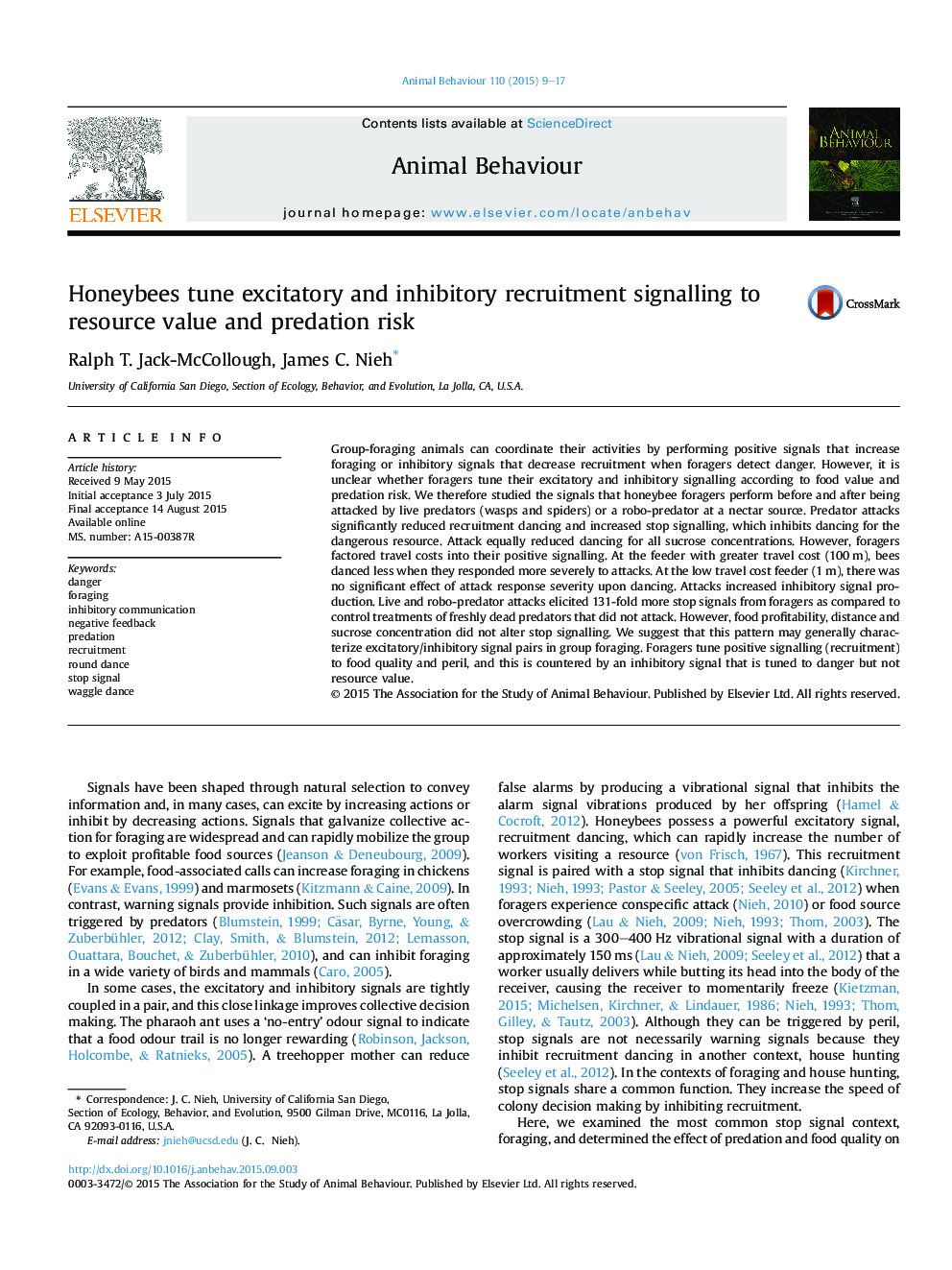| کد مقاله | کد نشریه | سال انتشار | مقاله انگلیسی | نسخه تمام متن |
|---|---|---|---|---|
| 8489486 | 1552218 | 2015 | 9 صفحه PDF | دانلود رایگان |
عنوان انگلیسی مقاله ISI
Honeybees tune excitatory and inhibitory recruitment signalling to resource value and predation risk
ترجمه فارسی عنوان
زنبور عسل سیگنالینگ استخدام هیجان انگیز و مهار کننده را به ارزش منابع و ریسک پیش بینی می کند
دانلود مقاله + سفارش ترجمه
دانلود مقاله ISI انگلیسی
رایگان برای ایرانیان
کلمات کلیدی
خطر، غذا خوردن ارتباط مهار کننده، بازخورد منفی، شکارچیان استخدام، رقص دور توقف سیگنال، رقص معما
موضوعات مرتبط
علوم زیستی و بیوفناوری
علوم کشاورزی و بیولوژیک
علوم دامی و جانورشناسی
چکیده انگلیسی
Group-foraging animals can coordinate their activities by performing positive signals that increase foraging or inhibitory signals that decrease recruitment when foragers detect danger. However, it is unclear whether foragers tune their excitatory and inhibitory signalling according to food value and predation risk. We therefore studied the signals that honeybee foragers perform before and after being attacked by live predators (wasps and spiders) or a robo-predator at a nectar source. Predator attacks significantly reduced recruitment dancing and increased stop signalling, which inhibits dancing for the dangerous resource. Attack equally reduced dancing for all sucrose concentrations. However, foragers factored travel costs into their positive signalling. At the feeder with greater travel cost (100Â m), bees danced less when they responded more severely to attacks. At the low travel cost feeder (1Â m), there was no significant effect of attack response severity upon dancing. Attacks increased inhibitory signal production. Live and robo-predator attacks elicited 131-fold more stop signals from foragers as compared to control treatments of freshly dead predators that did not attack. However, food profitability, distance and sucrose concentration did not alter stop signalling. We suggest that this pattern may generally characterize excitatory/inhibitory signal pairs in group foraging. Foragers tune positive signalling (recruitment) to food quality and peril, and this is countered by an inhibitory signal that is tuned to danger but not resource value.
ناشر
Database: Elsevier - ScienceDirect (ساینس دایرکت)
Journal: Animal Behaviour - Volume 110, December 2015, Pages 9-17
Journal: Animal Behaviour - Volume 110, December 2015, Pages 9-17
نویسندگان
Ralph T. Jack-McCollough, James C. Nieh,
